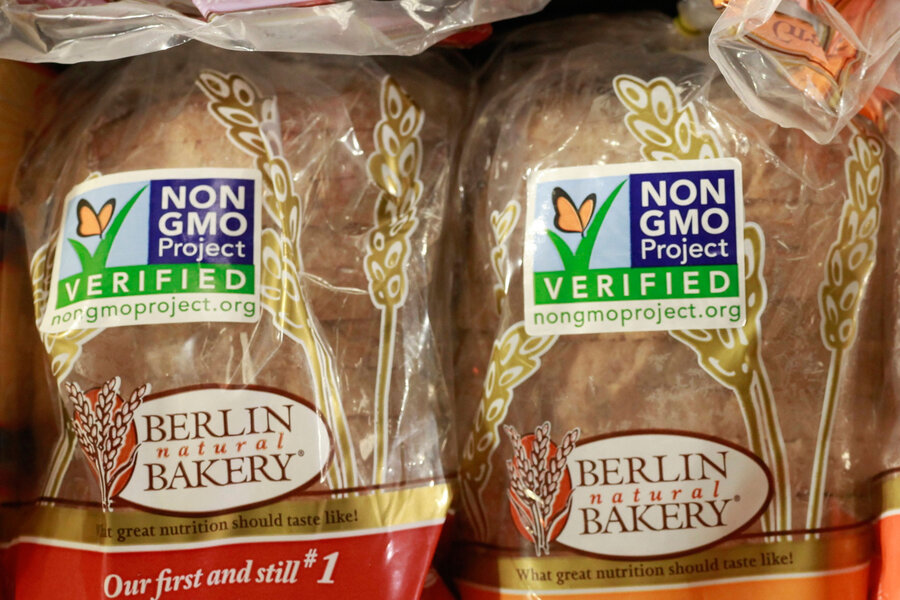How Vermont changed the national GMO-labeling debate
Loading...
In an effort to create a national standard for the labeling of genetically modified (GM) foods, the US Senate on Thursday approved legislation that would for the first time require food producers to label foods with genetically engineered ingredients.
The discussion over GMOs was thrust to the forefront of the national dialog by legislation passed in Vermont in 2014, which mandates labels for GM foods and went into effect on July 1. The food industry has said state-specific legislation leaves manufacturers with a false option of complying across the board or increasing costs to produce different labels. Congress has been debating a national standard for months.
In a 63-30 vote, the Senate agreed to allow food companies to alert consumers of GM ingredients in their products in several different ways: through word or picture labels, or simply through a barcode label that consumers could scan with their smartphones to access more information online.
Under the proposed legislation, the US Agriculture Department would decide which ingredients will be considered genetically modified. Genetic modification involves the use of biotechnology, rather than selective breeding methods traditionally used by farmers, to insert desirable genes, such as those that improve crop yield, from one organism into another.
The GMO bill has been turned over to the US House of Representatives, where legislators have a week to consider it before their seven-week recess. The bill is expected to pass, as it would block the patchwork of labeling laws, in some cases very strict ones, being generated in states such as Vermont, the first to pass such a law.
A national labeling standard would provide some relief to food companies, which have spent billions fighting unique labeling laws in different states.
"It's fair to say that it's not the ideal bill, but it is certainly the bill that can pass, which is the most important right now," Patrick Delaney, director of policy communications for the American Soybean Association, told Reuters.
In general, food producers say the labels would unnecessarily stigmatize GM foods. Of the GM foods on the market today, so far none have been found to carry more risk to health or the environment than non-GM foods, according to many studies, including those from the National Academy of Sciences and the World Health Organization. Some studies caution that these crops are relatively new, though, as they were first introduced in the 1990s.
States like Vermont, which have fought the food industry for years to give consumers access to information, are a major impetus for national legislation. Vermont's 2014 law requires producers to label foods that are genetically engineered, such as corn, soy and sugar beets. Rhode Island, Massachusetts, and other states are considering doing the same.
Environmental and public health advocates in these states who support labeling say that the national law approved by the Senate creates loopholes for some U.S. crops and makes it too hard for consumers to access information.
Vermont Senator Bernie Sanders says the bill's vague language and allowance for electronic labels that need to be scanned with a phone would defeat the purpose by making information inaccessible and by creating confusion.
"When parents go to the store and purchase food, they have the right to know what is in the food their kids are going to be eating," Sanders said on the floor of the Senate ahead of the vote.
Those fighting against GMOs argue that there are too many unknowns when it comes to long-term use of GMOs. These crops may not be safe for consumption, they say, have not improved crop yields, have led to excessive use of weed-killers known as herbicides, and could spread engineered genes into the environment, a situation with uncertain consequences.
Most corn, soybeans, and sugar crops in the US are produced from genetically engineered seeds.
This report uses material from Reuters.








